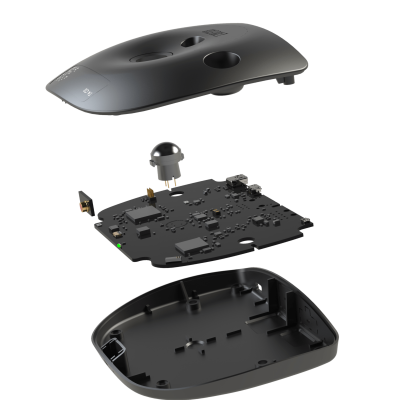
Have you ever wondered that the occupancy of a building may be related to the unused potential for energy savings? Why is it essential to optimize the control of heating, ventilation, and air conditioning systems?
Vilnius Gediminas Technical University researchers have conducted employment surveys of administrative buildings using TableAir office occupancy sensors. The large amounts of depersonalized data previously collected by the company were also used.
The Research was carried out as part of a project, “Research on the design and actual life cycle energy needs of a building to assess the impact of consumer behavior “ (No S-MIP-20-62), funded by the Research Council of Lithuania. Its results have been published in the article Office buildings occupancy analysis and prediction associated with the impact of the COVID-19 pandemic in the highly ranked international journal Sustainable Cities and Society.
The executor of the research Junior Researcher Jonas Bielskus compared TableAir sensors with 3D indoor occupancy cameras and other similar products available on the market and used in parallel. He concluded that the sensors produced by TableAir allow accurate and reliable detection of occupied workplaces thanks to the double-checking methodology. In addition, they are easily mounted; the information is transmitted to a server and can be read remotely.

Project Manager, Professor of the Department of Building Energetics, Doc. Dr. Violeta Motuzienė said that building occupancy monitoring is related to the unused potential for energy savings in existing buildings. In this case, TableAir sensors provide the ability to store large amounts of data (BigData) that can be used to optimize the control of heating, ventilation, and air conditioning systems.
The scientists of Vilnius Tech used the data collected by TableAir sensors to develop a mathematical forecasting model for the occupancy of the administrative building. The machine learning-based model is able to use sensor data to train and forecast building occupancy. It enables the use of artificial intelligence to pre-optimize the control of heating, ventilation, and air conditioning systems. This is especially relevant in optimizing the energy needs of ventilation systems, where the occupancy of the premises directly determines the actual demand for ventilation, and often over-ventilated premises (i.e., significantly more air is supplied than required) are associated with energy waste. In other words, if the forecasted information on the future occupancy of the premises is available, the air volume of the ventilation system may be adjusted in advance so that the premises are ventilated only to the extent necessary to maintain adequate air quality. A similar application can be used to control indoor lighting and other energy-using systems.
In summary, V. Motuzienė explained that the consumer and their behavior largely determine the energy needs in new and energy-efficient buildings, so it is essential to know when they are in the building and how they behave. Such knowledge enables the application of artificial intelligence in building management, reducing energy consumption, and contributing to global decarbonization goals.
Find the full article about Office buildings occupancy analysis and prediction associated with the impact of the COVID-19 pandemic
Subscribe to the monthly newsletter!
By clicking the “Subscribe” button above, you agree to the Terms & Conditions and Privacy Policy
2014 – 2024 Proudly designed and made in Lithuania
Over 60,000 users worldwide can’t be wrong – see for yourself why they choose TableAir.